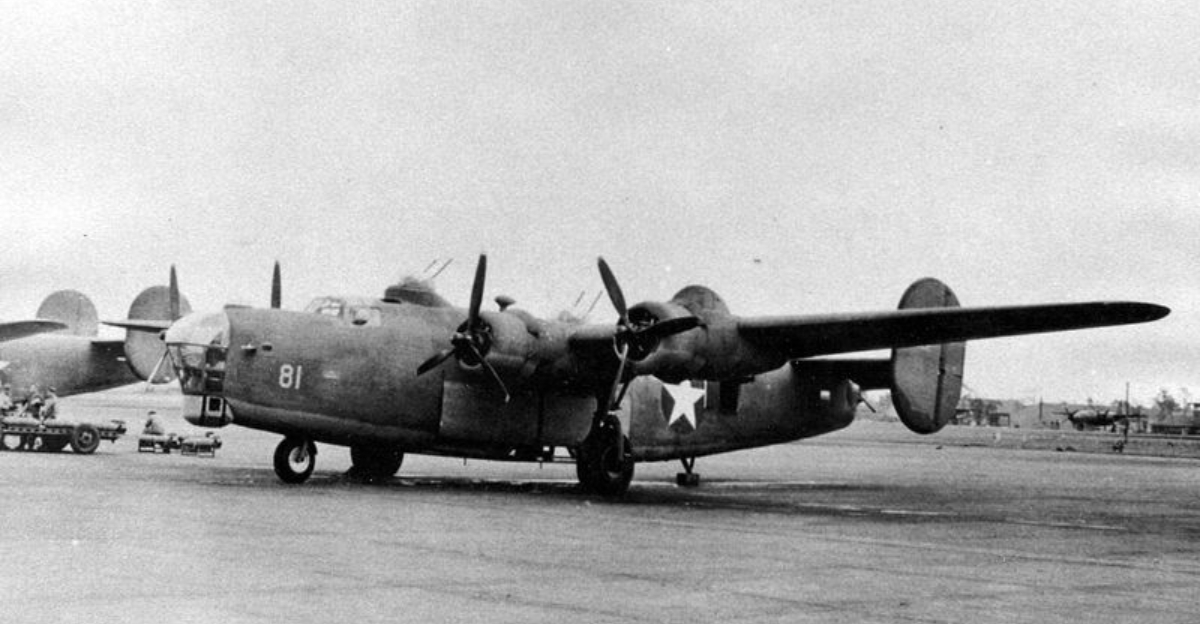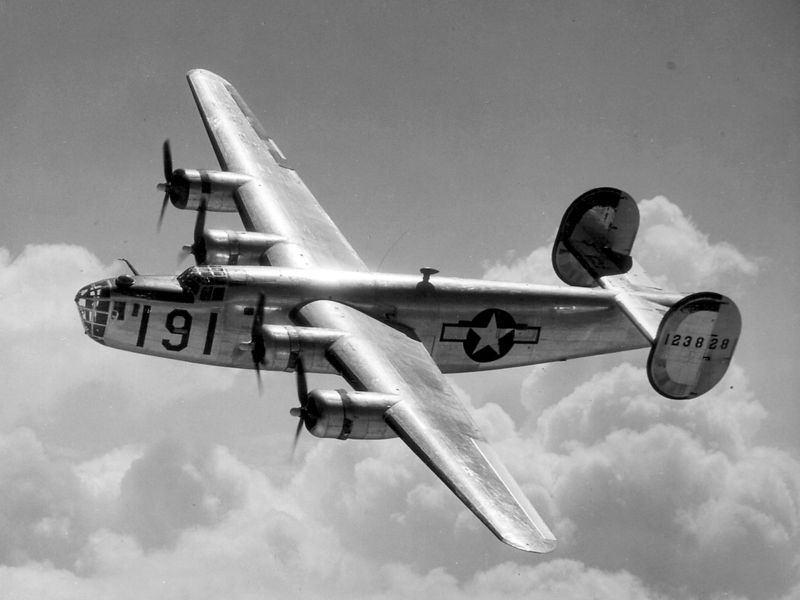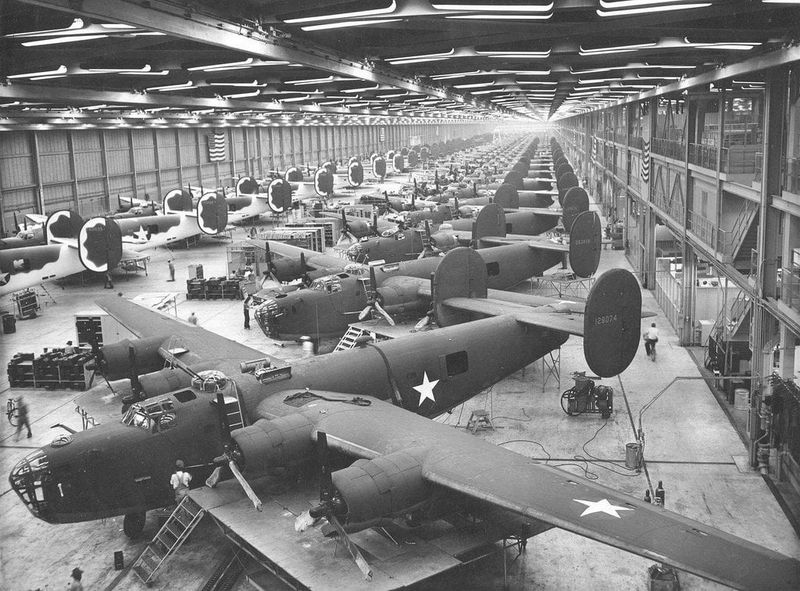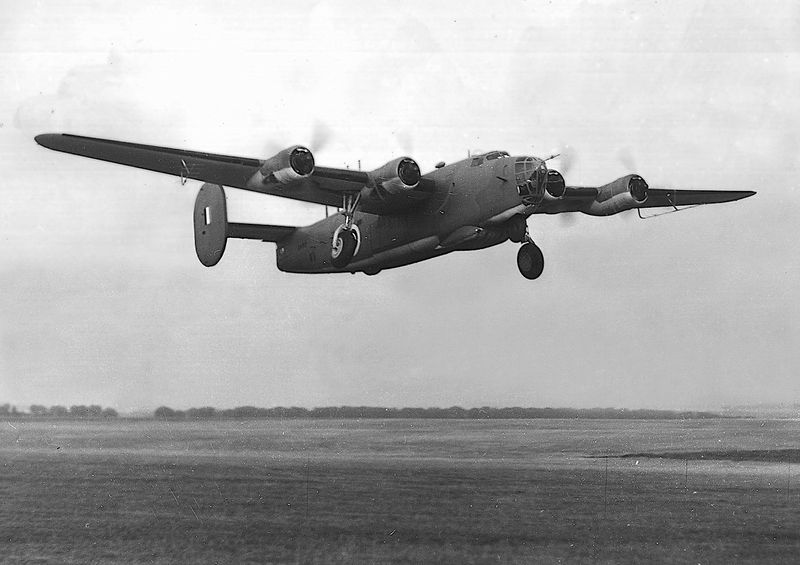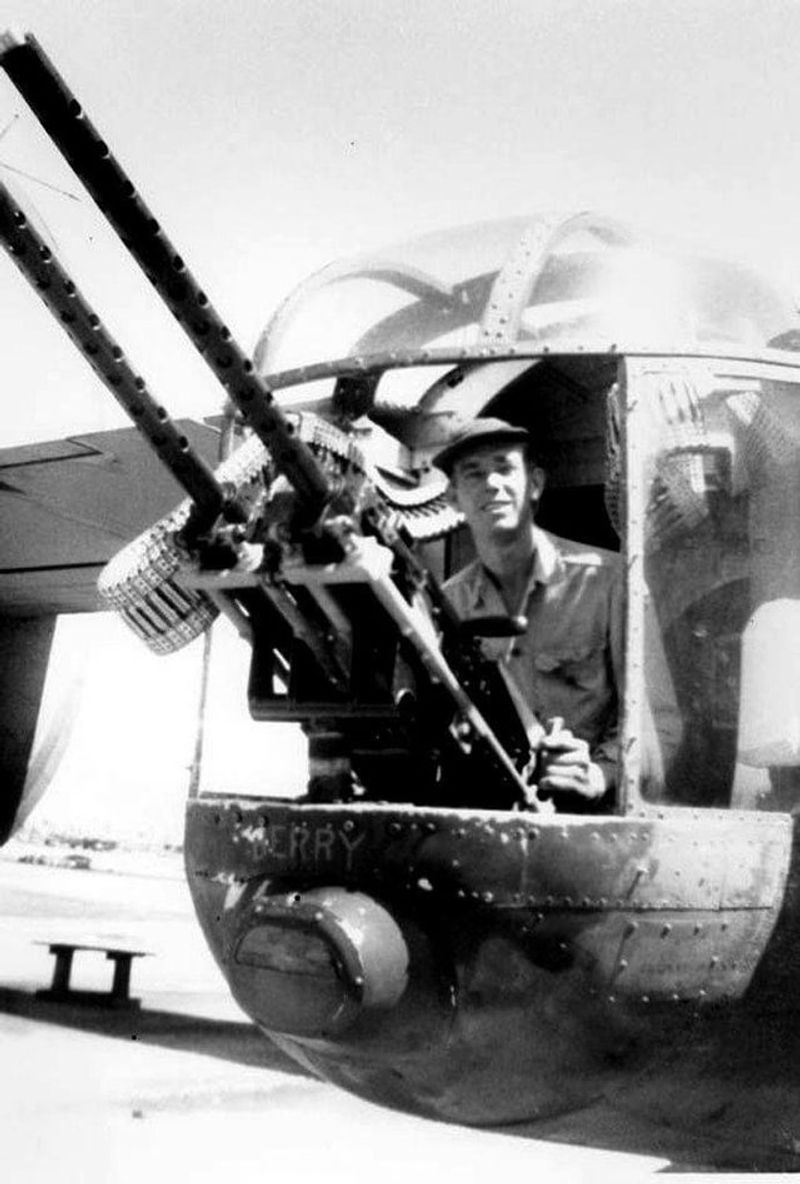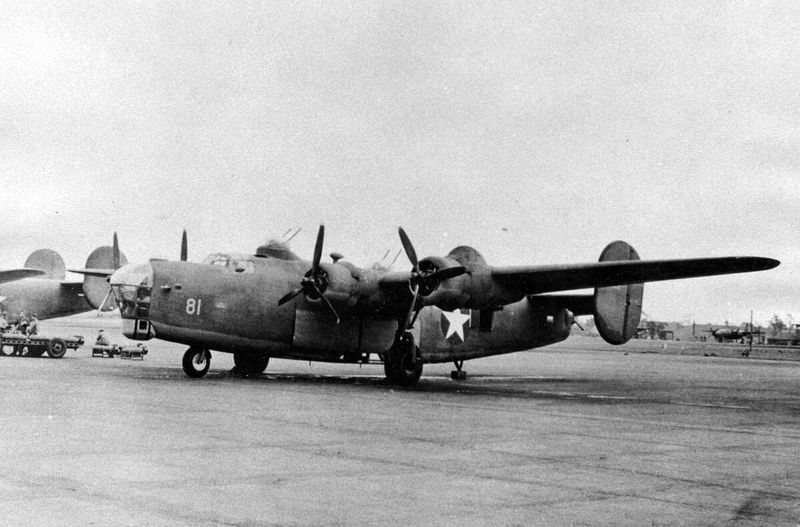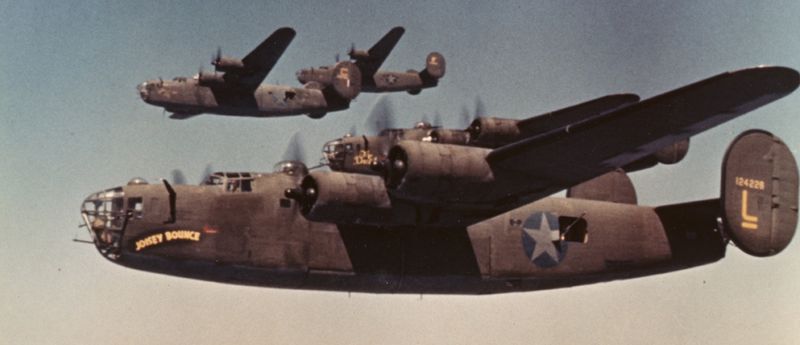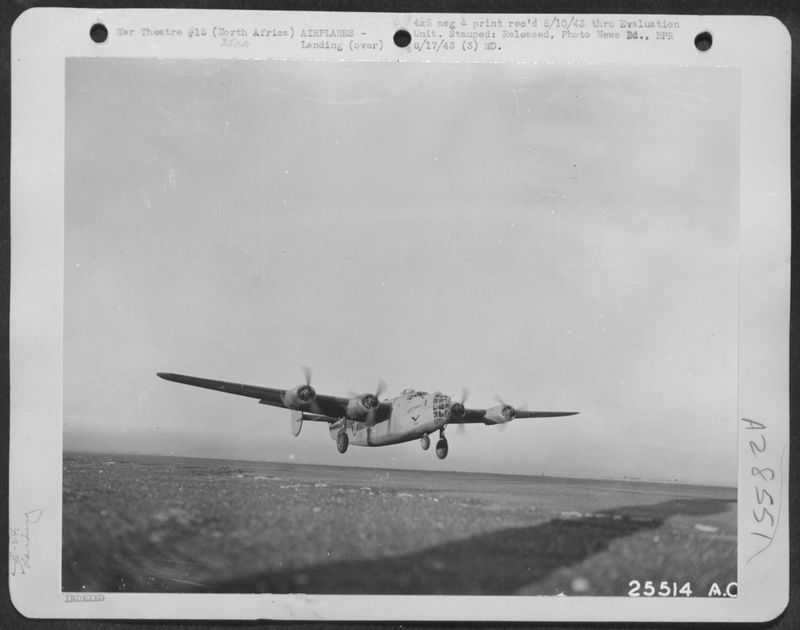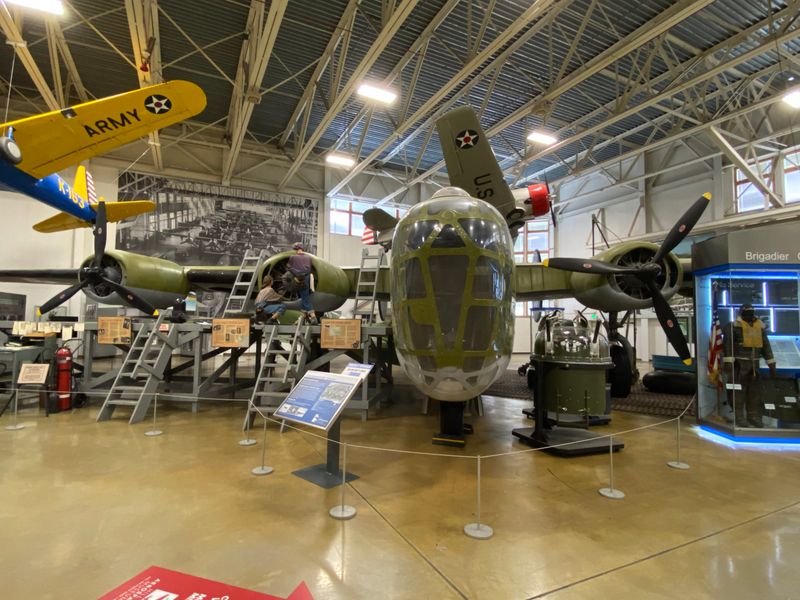The B-24 Liberator stands as a monumental achievement in aviation history. Known for its versatility and unmatched production numbers, this aircraft played pivotal roles across various theatres during World War II.
From record-setting production to its formidable .50-caliber armament, the B-24 was a powerhouse in the skies. Let’s explore nine fascinating facts about this iconic bomber that left a lasting legacy on military aviation.
1. American Heavy Bomber Designed by Consolidated Aircraft
With a heart as bold as its design, the B-24 Liberator was conceived by Consolidated Aircraft. First taking to the skies on December 29, 1939, this heavy bomber quickly made its mark. Its engineering prowess was evident as it joined the U.S. Army Air Forces in 1941. This aircraft was a marvel of its time, characterized by its innovative design and robust performance.
2. Record-Setting Production
The B-24’s production was nothing short of phenomenal, with approximately 18,500 units built between 1940 and 1945. Ford’s Willow Run plant alone contributed 8,685 of these iconic aircraft. This achievement marked the B-24 as the most-produced American military aircraft, setting a record that stands to this day. The sheer scale of its production was a testament to its importance in the war effort.
3. High-Aspect-Ratio Davis Wing
The B-24’s secret weapon was its high-aspect-ratio Davis wing. This innovative design gave the Liberator exceptional cruise speed and range. It enabled the aircraft to carry a hefty bomb load of up to 8,000 pounds in combat, making it a formidable presence in the skies.
4. Formidable .50-Caliber Defensive Armament
Equipped with an array of .50-caliber machine guns, the B-24 was a fortress in the sky. Standard variants carried up to ten of these powerful guns, strategically positioned for all-around protection. This formidable armament allowed the B-24 to defend itself against enemy fighters, enhancing its survivability during missions.
5. Specialized “Gunship” Prototype (XB-41)
A prototype with promise, the XB-41 was designed as a “gunship” to escort bomber formations. It boasted fourteen .50-caliber guns, including a Bendix chin turret. However, its increased weight and drag prevented it from maintaining formation speeds, leading to the project’s cancellation. Despite its short-lived service, the XB-41 was an ambitious attempt to innovate aerial defense.
6. Key Role in Strategic Bombing
The B-24 Liberator was a key player in the strategic bombing campaigns of World War II. Operating across every major theater, from Europe to the Pacific, it worked alongside B-17s to execute critical missions. Its versatility and range made it an indispensable asset in the U.S. Army Air Forces’ arsenal.
7. Decisive Long-Range Missions
The Liberator’s remarkable range allowed it to participate in daring long-range missions, such as Operation Tidal Wave. This bold raid targeted the Ploiești oil refineries on August 1, 1943, demonstrating the B-24’s capacity to strike deep into enemy territory. Such missions were crucial in crippling enemy infrastructure and showcased the bomber’s strategic value.
8. Anti-Submarine Patrols
Beyond bombing runs, the B-24 played a vital role in anti-submarine warfare. Navy and RAF Liberators closed the ‘Mid-Atlantic gap’ during the Battle of the Atlantic. These extended patrols provided crucial protection against U-boat attacks, safeguarding Allied convoys and maintaining vital supply lines.
9. Retirement and Legacy
Though phased out of U.S. service by 1968, the B-24’s influence endures. Its blend of range, payload, and defensive firepower set a standard for subsequent bomber and patrol aircraft design. The Liberator’s legacy is celebrated in museums and by enthusiasts, a testament to its enduring impact on aviation history.
